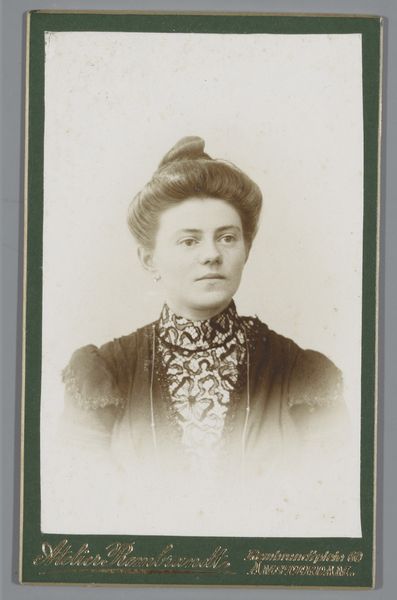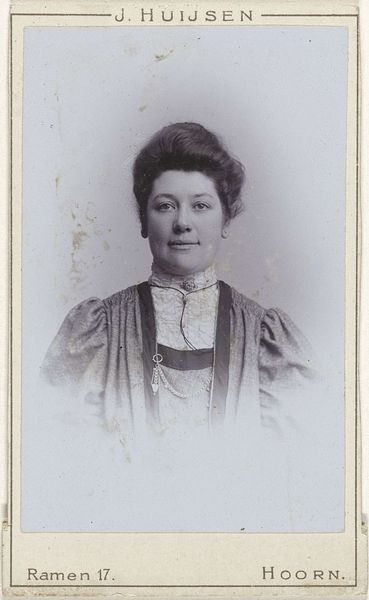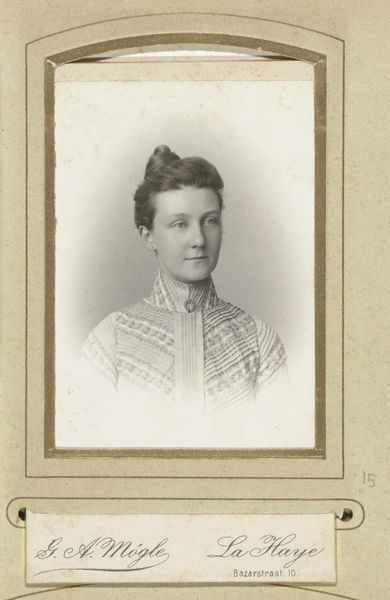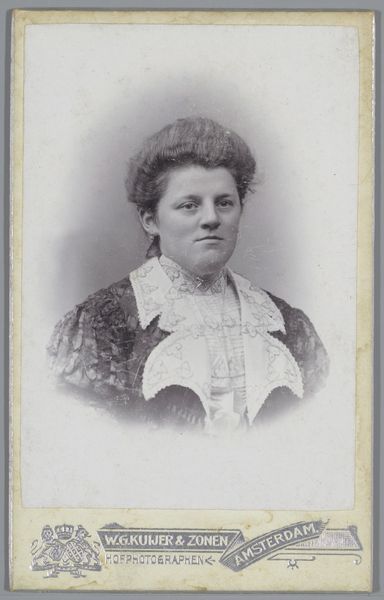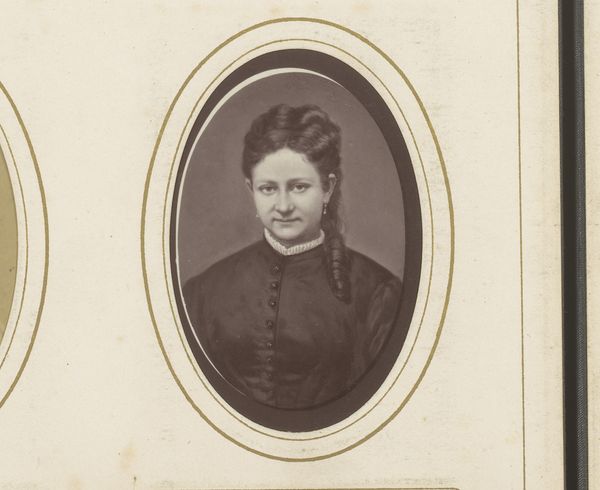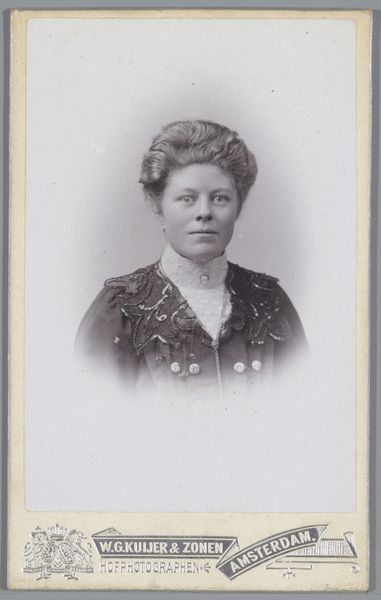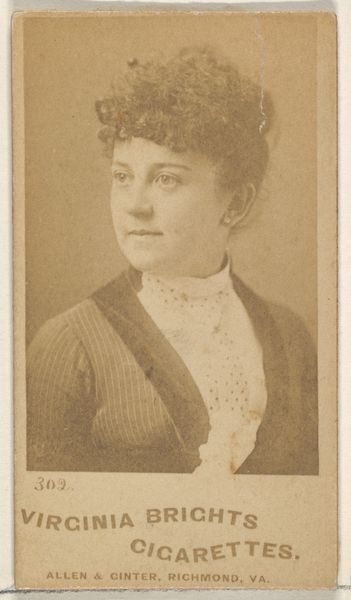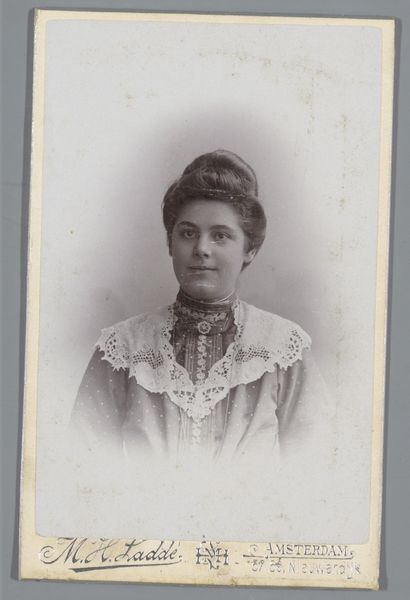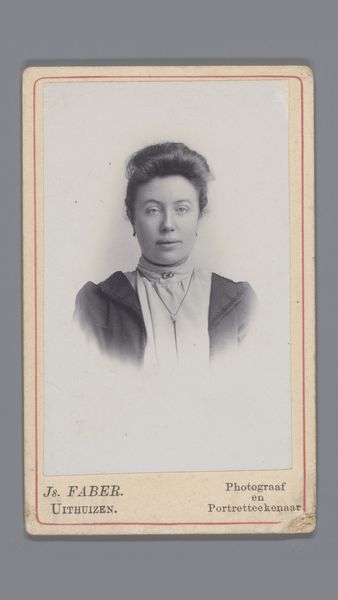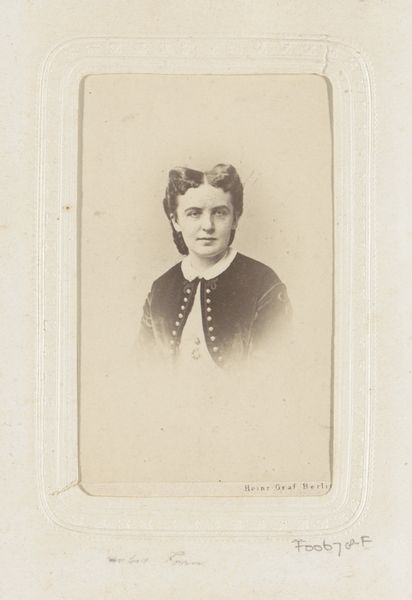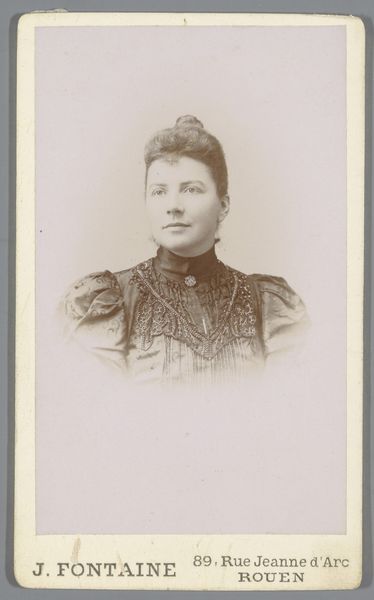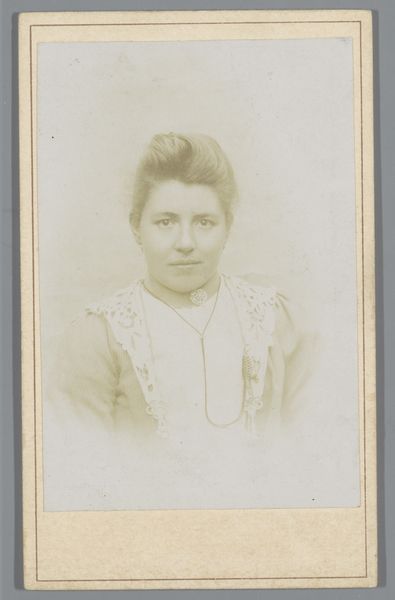
photography, gelatin-silver-print
#
portrait
#
portrait image
#
photography
#
historical photography
#
gelatin-silver-print
#
realism
Dimensions: height 88 mm, width 57 mm, height 104 mm, width 65 mm
Copyright: Rijks Museum: Open Domain
Editor: This is "Portret van Jantje Houtman," a gelatin-silver print created sometime between 1908 and 1915 by Johannes Laurens Theodorus Huijsen, currently residing at the Rijksmuseum. It feels very much like a photograph one might find tucked away in an old family album. What's your take? Curator: Looking at this portrait, I see it as a fascinating cultural artifact. It isn't just a picture of a woman; it's a window into the social conventions surrounding portraiture in the early 20th century. Studio portraiture was becoming more accessible, yet still carried a certain weight of formality and status. Do you notice how the photographer’s name and address are so prominently displayed? Editor: Yes, it’s like branding! I suppose it’s advertising and documenting at the same time? Curator: Exactly! Consider how the rising middle class utilized photography to document and perform their social identity. These portraits became signifiers of respectability and belonging. We see how photographic studios shaped visual language by carefully crafting images with specific backdrops and poses. What can you say about Jantje's gaze? Editor: She looks… earnest. Perhaps a little apprehensive. Curator: That apprehension could reveal something about the sitter's social standing or their feelings about being photographed. Her dress and that decorative brooch are also elements in play here. Think of it not just as capturing likeness, but performing social rituals. These early photographs contribute to shaping our perceptions of that period. Editor: That makes me rethink the photograph as more than just a static image. It’s like a piece of social history in itself. Curator: Precisely. Now, looking at how photographic archives can reconstruct historical power dynamics and give voice to underrepresented communities is interesting. Understanding portraiture traditions highlights what might have been excluded or marginalized. Editor: Thanks! I learned how seemingly straightforward portraits can contain all kinds of clues. Curator: And for me, your insight reinforced how we tend to overlook aspects when caught up in theory!
Comments
No comments
Be the first to comment and join the conversation on the ultimate creative platform.
